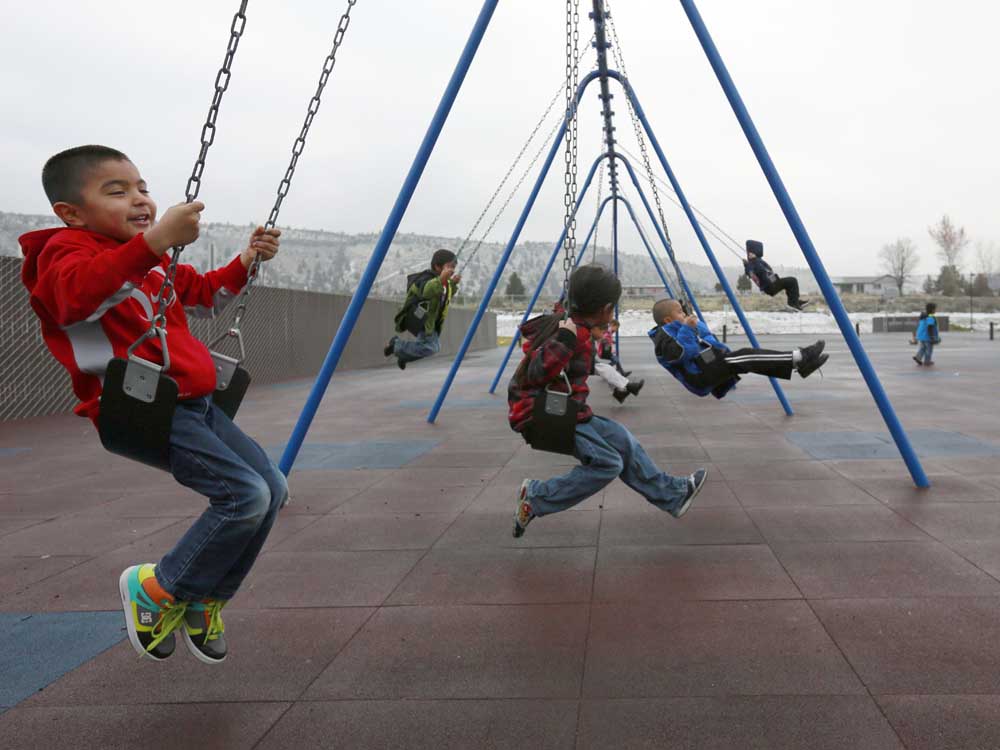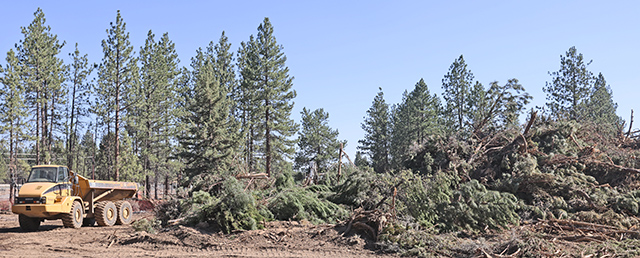Warm Springs leaders, teachers excited for statewide Native American lesson plans
Published 12:00 am Sunday, September 22, 2019

- Kindergartners swing during recess at Warm Springs K-8 Academy in 2014.
WARM SPRINGS — Shayla Lenaya Stwyer, a member of the Wasco tribe, said when she grew up in Warm Springs, the history and culture of Native American tribes in the area weren’t taught in her public school.
Instead, the curriculum treated all Native Americans as a single entity. The classroom focus was on their encounters with Europeans from hundreds of years ago.
Trending
“We learned about Columbus and that whole deal,” said Lenaya Stwyer, 34. “It was about what happened back east, like when the (Mayflower) landed. But I don’t remember hearing about Pacific Northwest tribes.”
Deanie Johnson, a member of the Warm Springs, Wasco and Paiute tribes, had a similar experience when she attended schools in Warm Springs and Madras.
“We learned about Sitting Bull and other tribes,” said Johnson, 56. “If you’re not in a traditional cultural family, you don’t learn a whole lot about yourself, where you come from and our cultures.”
But two new lesson plans, scheduled to debut in classrooms across Oregon in January, could bring dramatic changes.
Tribal leaders and teachers said the lessons will help local Native American students better understand and develop pride for their cultures, as well as help other students view Oregon’s Native Americans as real people and not as stereotypes.
During the last year, Johnson and Lenaya Stwyer — two Native American language teachers at the Warm Springs K-8 Academy — along with other Warm Springs teachers and tribal leaders helped create lessons that focus on the histories and cultures of Oregon tribes.
Trending
Two Warm Springs tribal leaders also collaborated with representatives from the eight other federally recognized tribal governments in Oregon.
“I think it’s important for all the students to know that Native Americans are not history,” said Myra Johnson-Orange, a Warm Springs tribal elder and project coordinator, who helped create the new lesson plans. “Just because I go to Walmart and shop doesn’t mean I don’t remember the ways of life of our people.”
Oregon Senate Bill 13, passed in the 2017 legislative session, gave the Oregon Department of Education $200,000 to create a statewide curriculum about Oregon’s Native American tribes, consulting with tribes in the process. It also provided $200,000 to each of Oregon’s nine tribal governments to create tribe-specific lesson plans that can be used as supplements to the broader statewide curriculum, according to April Campbell, Indian Education Advisor for the state.
Both sets of lessons are for grades four, eight and 10, Campbell said.
In early 2018, Johnson-Orange, a member of the Northern Paiute and Sahaptin tribes, and Valerie Switzler, the Confederated Tribes of Warm Springs’ general manager of education and a member of the Warm Springs and Wasco tribes, met in Salem with representatives from the eight other federally recognized Oregon tribal governments to plan the core themes of the statewide curriculum.
The group took a big-picture look at the issue, said Switzler, 51, and asked: “What would be true to all the Indian tribes in Oregon?”
The nine central themes of the tribal history curriculum include history, language, tribal government, genocide and treaties with the United States government.
Campbell, a citizen of the Confederated Tribes of Grande Ronde in Polk County, said the state wants to have teachers incorporate tribal history into subjects beyond the typical social studies or English lesson.
One proposed fourth grade activity has students use math skills to determine the current population of Native Americans living in Oregon and the size of tribally owned lands. Along with math skills, students will learn how treaties with the U.S. government required tribes to give up land they had lived on for thousands of years. Students will be reminded that Native Americans are not just a group from history books, but a piece of Oregon’s present and future.
Johnson-Orange said teaching non-Native American students about the modern existence of Oregon’s tribes is crucial, because some people still think of them in broad stereotypes.
“We get a lot of silly questions, even today: ‘Do you guys still live in teepees?’ ‘Oh, there’s no more Indians,’” she said. “That’s the phrases you hear, from people in Bend, even.”
The localized lesson plans, much of which is available on the Oregon Department of Education’s website, gets more in-depth about the history and culture of specific tribes. For example, the Confederated Tribes of Warm Springs’ curriculum includes an eighth grade lesson on the Numu Trail of Tears. The lesson details how the Numu people — also known as Northern Paiute — were forcibly removed from their original land, which spanned much of southeastern Oregon, as well as areas from other nearby states, into the Warm Springs reservation.
Warm Springs’ teachers and tribal leaders said if students learn the history and culture of their local tribes, they will develop a sense of pride in their heritage.
“Some of our own kids are ashamed of being Native American, and that’s not a good thing,” Johnson-Orange said. “Our kids don’t understand a lot of (our culture), and they need to understand it so they become proud of who they are as native people.”
Campbell said the state plans to dedicate more money in the future to expand the statewide curriculum to more grades beyond fourth, eighth and 10th, eventually having lesson plans for grades K-12. Johnson-Orange agreed that although the new curriculum is a step in the right direction, the process of teaching Oregon students about local tribes isn’t finished.
“There’s a lot of work to be done in refining the curriculum,” she said. “This is just the tip of the iceberg.”
— Reporter: 541-617-7854, jhogan@bendbulletin.com







